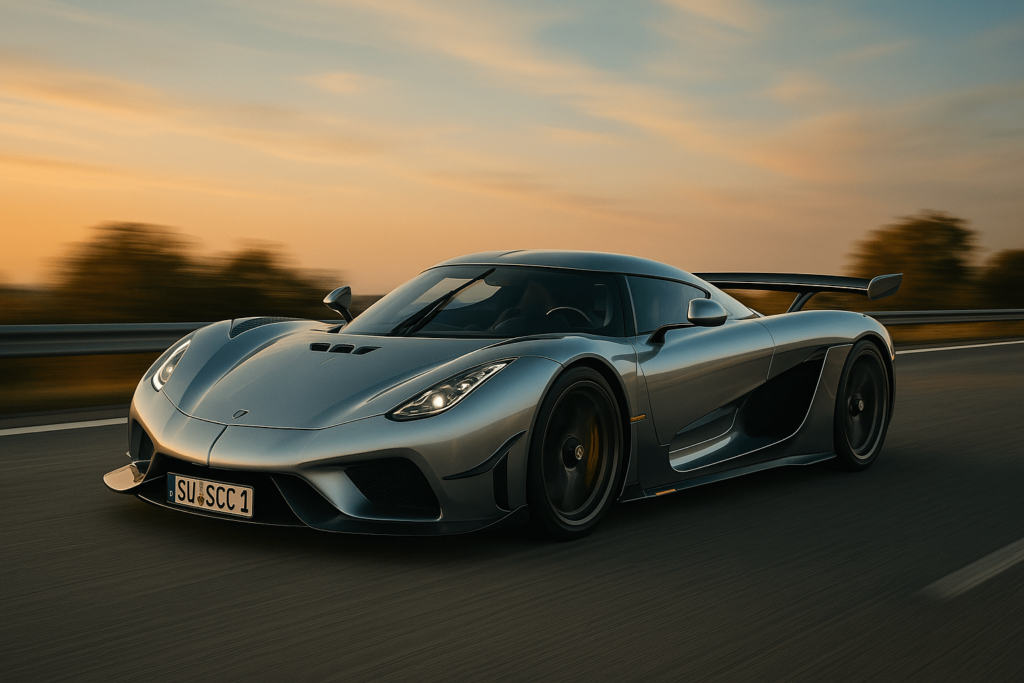Speed has always been the heart of the supercar world, but in recent years, a new breed of machines has emerged: hypercars. These aren’t just fast—they’re surreal. They blur the line between science fiction and reality, marrying bleeding-edge technology with astronomical performance figures. If supercars are the dream, hypercars are the fantasy.
So, what exactly is a hypercar?
While there’s no official definition, hypercars are typically limited-production vehicles that represent the absolute peak of performance, design, and engineering. They go beyond mere speed. These are the unicorns of the automotive world—cars like the Bugatti Chiron, Koenigsegg Jesko, and Pagani Huayra that exist to push every conceivable boundary.
The Arms Race Begins
The modern hypercar era arguably began with the Bugatti Veyron in 2005. With 1,001 horsepower and a top speed over 250 mph, it was the first car that seemed to bend the laws of physics. It needed ten radiators, four turbochargers, and tires specially developed to handle its insane speed.
Then came the Koenigsegg Agera RS, Hennessey Venom F5, and eventually the Bugatti Chiron Super Sport 300+, which shattered the 300 mph barrier. Suddenly, manufacturers weren’t just building cars—they were building rockets that happened to have license plates.
Technology from Another Planet
Hypercars aren’t just about raw power. They use materials like carbon fiber, titanium, and Inconel to save weight and increase strength. Active aerodynamics allow these cars to reshape themselves at high speeds, adjusting spoilers and diffusers to maintain grip and stability.
Then there’s the software. Advanced traction and stability control systems, GPS-linked suspension, and predictive torque vectoring make these monsters drivable on both the Nürburgring and city streets.
Inside, many hypercars look like a futuristic spaceship—touchscreens, digital cockpits, and sculpted seats that look more like art than furniture.
Electric Enters the Arena
The next chapter of hypercars is being written in electrons, not gasoline. Brands like Rimac and Lotus are leading the charge.
The Rimac Nevera, for example, boasts nearly 2,000 horsepower from four electric motors—one at each wheel. It can launch from 0 to 60 mph in 1.85 seconds and adjust torque to each wheel in real time for incredible cornering ability.
This EV hypercar isn’t just fast—it’s smart. It uses over 500 sensors to monitor and adapt to road conditions, offering a level of precision unheard of in traditional combustion cars.
The Cost of Greatness
Owning a hypercar isn’t just about affording the price tag, which can range from $2 million to over $5 million. It’s about exclusivity. Many models are limited to fewer than 100 units worldwide. Some, like the Pagani Zonda HP Barchetta, are made in single-digit quantities.
Then there’s the maintenance—specialized mechanics, custom parts, and service intervals that often require flying the car to another country.
Why We Obsess Over Them
Despite their cost, limited usability, and impracticality, hypercars captivate us because they represent the bleeding edge of what’s possible. They are the Formula 1 cars for the road, the fastest, most advanced, most uncompromising machines ever built.
They are not just transportation. They are inspiration.


